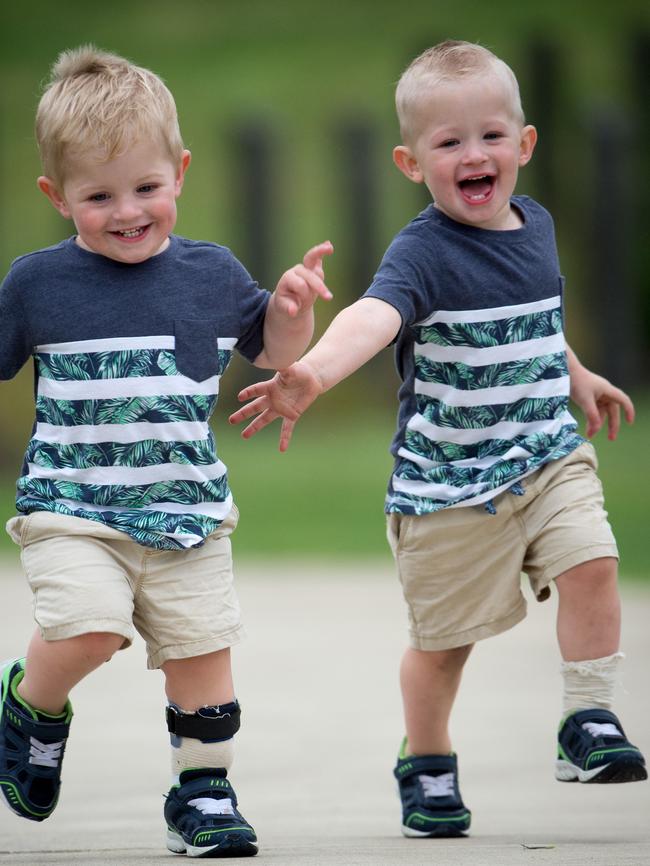Guidelines for child stroke to be standardised
STROKE isn’t top-of-mind for doctors when children are sick but a new set of national guidelines could help speed up diagnosis and improve treatment.

VIC News
Don't miss out on the headlines from VIC News. Followed categories will be added to My News.
HUNDREDS of Australian children and babies who have strokes each year will now have better access to the latest life-changing treatments and diagnostic tools used on adults.
Most delays to treatment for adult stroke patients occur before they get to hospital. But for the 300 kids who suffer a stroke each year, the hold-ups typically happen once they get to hospital as stroke is not top-of-mind for clinicians or parents.
It usually takes 12 hours to confirm a diagnosis, a delay that means they miss out on time-critical interventions to minimise brain injury and improve recovery, leaving half of young patients with lifelong disabilities.
EXPERIMENTAL DEVICE STIMULATES THE TONGUE TO IMPROVE STROKE SURVIVORS’ BALANCE
Just one Victorian child has received clot-busting medication within the crucial six-hours after an ischaemic stroke, despite this being routinely used in adult patients.
But the first national clinical guidelines, to be released today, led by doctors from the Royal Children’s Hospital and Murdoch Children’s Research Institute, have established how best to identify and treat patients so care can be standardised across the country.

MCRI researcher and director of the RCH’s stroke program, Associate Professor Mark Mackay, said experts from Australia and New Zealand had made more than 60 recommendations for emergency department doctors, radiologists and anaesthetists on how to best diagnose and treat childhood stroke.
NEW STRATEGY TO DEAL WITH VICTORIA’S STROKE PATIENTS
“Children are not accessing the treatments that have transformed outcomes for adults, largely because it’s not on people’s radar,” Associate Prof Mackay said.
By establishing national standardised care, Associate Prof Mackay said this would allow them to follow these patients over the long term to measure how treatment improved outcomes.
TWINS POWERING ON
THERE will come a time when Bailey Clarkson is old enough to ask why he can’t climb as fast or jump as high as his twin brother Beau.

But in the meantime, as the boys prepare for their second birthday tomorrow, wherever Beau goes, Bailey pushes himself to keep up.
Parents Natalie Reynolds and Tim Clarkson will celebrate today and reflect on how far Bailey has come since suffering a stroke on his first day of life.
The couple has worked on interventions with therapists since Bailey was one month old, after the Royal Children’s Hospital stroke clinic assessed he was likely to develop cerebral palsy.
“He’s got his little problems and quirky bits, and we’ve put in a lot of hard work with him, but in the big scheme of things, we never thought he’d be as good as he is now,” Ms Reynolds said.
While the cause of stroke in newborns is usually unknown, each year about 300 Australian children will have a stroke typically caused by artery inflammation of the arteries or congenital heart disease.


